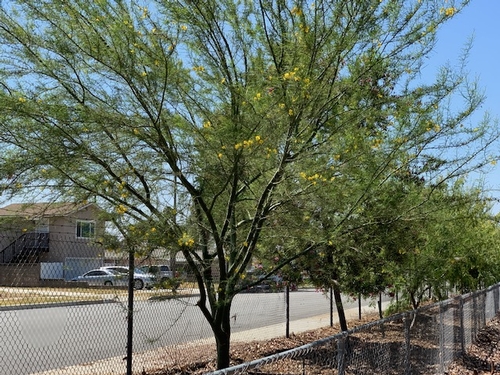
Posts Tagged: Water Conservation
The Top Ten Ways to Conserve Water in Your Landscape and Garden in San Bernardino County
1. Select drought-resistant plants that grow well in your climate zone and microclimate (sun, shade, etc.). Try these search engines:
SelecTree: A Tree Selection Guide (calpoly.edu) Plant Search Database
Plant Search Database - Water Use Classification of Landscape Species (WUCOLS IV) (ucanr.edu)
For inland San Bernardino County: Home - Inland Valley Garden Planner
2. ‘Hydrozone': Place plants with similar water needs (very low, low, medium, high) together and water the hydrozones on different valves (or, if hand watering, water plants requiring the most water longer but not necessarily more often than other plants).
3. Make sure your irrigation system is operating properly (pressure, spacing, no weeds around heads, no broken parts, etc.).
4. Irrigate based on species and seasonal water needs (highest in summer) and soil type (sandy loam, clay loam, etc.).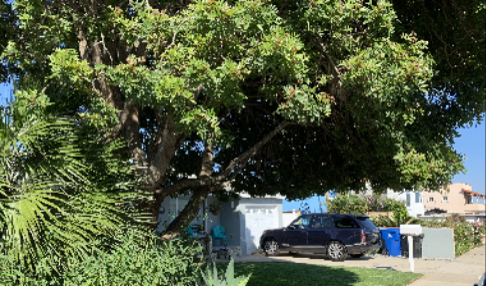
5. Irrigate slightly below the current root zone depth of your plants to encourage deep rooting into cooler soil: - 6”-8” for annuals, perennials, and turf - 8”- 1' for shrubs - 1' or deeper for trees
6. Water early in the morning when soil evaporation is minimal.
7. Control weeds. They compete with your garden plants for water.
8. Spread and maintain 2-4” of mulch around garden plants and trees (3-4” for wood chips, 2” for pebbles, decomposed gravel, etc.) keeping it a few inches away from tree trunks.
9. Avoid over-fertilizing. Too much nitrogen creates weak growth and the need for more water.
10. If you have a lawn and still want to keep it, water based on the UC ANR 'Lawn Watering Guide': http://ucanr.org/freepubs/docs/8044.pdf
Contact a trained University of California Cooperative Extension (UCCE) Master Gardener in San Bernardino County for more help! mgsanbern@ucanr.edu (fastest!) or: (909)387-2182 (leave a message for a return phone call)
Redlands trees
Applications of Organic Mulch Result in Enhanced Tree Growth and Water Savings
I hope all of you and your loved ones are staying well and healthy as the pandemic continues. Involving yourself in outdoor activities is not only a great way to escape 'cabin fever' and improve your physical health but it is also good for you psychologically, as well.
A silver lining for me over the past few months has been the opportunity to summarize results of some research studies including an update from a mulch trial that I'll report on virtually rather than live at the American Society for Horticultural Science conference (that was to be held in Orlando). I thought you might be interested in the results.
The objective of the research project was to measure the impacts of organic mulch treatments on the growth and health of four species of low maintenance, drought-tolerant landscape trees under deficit irrigation. Species selected were Parkinsonia x ‘Desert Museum' (it's thornless!); Chilopsis linearis ‘Bubba' (Desert Willow) (beautiful magenta flowers!), Pistacia ‘Red Push' (hybrid from P. atlantica and P. integerrima with brilliant orange fall foliage), and Prosopis glandulosa ‘Maverick' (thornless). Trees were planted in a randomized complete block experimental design in at the Chino Basin Water Conservation District (CBWCD) in Montclair in October, 2016. Half of the trees received 4” of organic mulch and half did not. Trees were transplanted from 15-gallon containers and irrigated with recycled water at 80 percent of reference evapotranspiration (ETo) the first 12 months.
Irrigation was reduced to 50% ETo in November, 2017 which was maintained until May 2020, when irrigation ceased. While the study continues through October 2020, there are some interesting early results. Organic mulch applications enhanced growth with no loss in quality in the Pistacia, Prosopis glandulosa, and Chilopsis linearis trees while growth was actually better in the Parkinsonia trees that did not receive mulch. This may be due to the fact that its trunk and branches actively photosynthesize as well as its leaves. Parkinsonia leaves also feature sunken guard cells, providing another form of drought avoidance. Furthermore, they develop deep root systems and may not need the added benefit of reduced soil evaporation in the top few inches of soil provided by the mulch. While all of the species selected have wonderful attributes, the Parkinsonia 'Desert Museum' has all the best traits of its palo verde heritage including having no thorns and a continues bloom throughout summer.
A huge thanks to our UCCE San Bernardino County Master Gardener team (led by Irene) who take data quarterly on the trees, recording trunk circumference at 6" and 3'. This is another great example of the breadth and depth of the contributions of our wonderful volunteers!
The four species of landscape trees in this study are part of a larger study at University of California, Riverside to determine the ability of 12 species of landscape trees to mitigate impacts of climate change. While I'll be long retired, growth and health data of all species will continue to be evaluated through at least 2035. The study at CBWCD provided the opportunity for a mulch/no mulch treatment for four of the most promising species which was space-limited at UCR.
Below are plot photos from October 2016 (right after planting), July 2020 (no irrigation for 3 months), a mature 'Desert Museum' tree in prolific bloom (photo credit to Dr. Bob Perry, Emeritus Professor, Cal Poly Pomona), and a mature Chilopsis linearis 'Bubba' from our UCR plot.
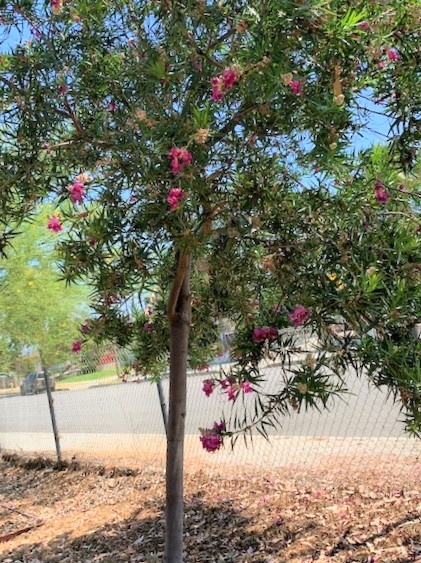
Save the date! We will be hosting a virtual UCR Field Day on September 3, 2020 featuring our drought-tolerant landscape plots at UC Riverside that was to be held live last May. More information is forthcoming but it will provide at least four hours of continuing education hours and a chance for you to ask questions of Dr's Amir Haghverdi, Don Merhaut and myself.
Have a wonderful August in your garden!
Janet
Sensors, drones, and CIMIS: UCCE Partners with EarthWatch and CBWCD to Save Water in Urban Landscapes
On Friday UCCE San Bernardino County Master Gardener Coordinator Maggie O'Neill and I hosted a tour that showcased UC ANR Urban Water Use Specialist's Amir Haghverdi's landscape plots at the UCR Citrus Experiment Station. In attendance were CEO Scott Kania and Lead Scientist Mark Chandler from EarthWatch, Becky Rittenburg and Monica Curiel from Chino Basin Water Conservation District, and Darrel Jenerette, UC Riverside Professor of Landscape Ecology. Our team is implementing an exciting citizen science project measuring water conservation based on implementing 'best practices' in urban landscapes in the greater Los Angeles Basin.
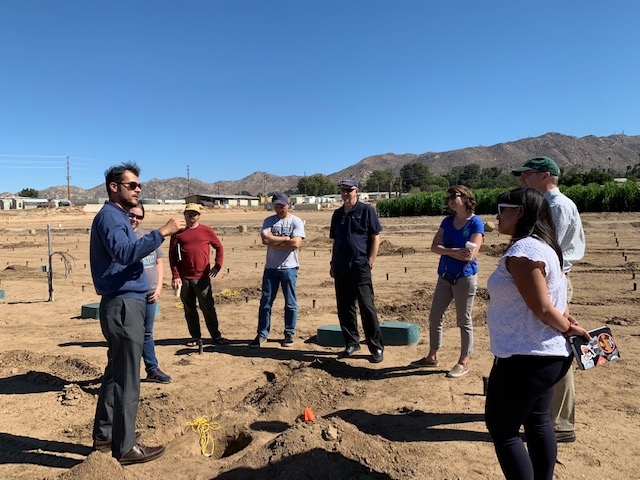
Amir Haghverdi showing plots to EarthWatch, UCCE and CBWCD teams
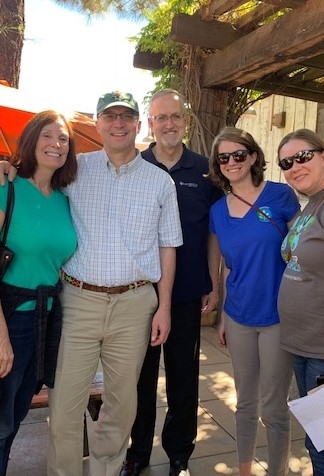
EarthWatch, CBWCD, and UCCE San Bernardino team
Drought tips available for farmers
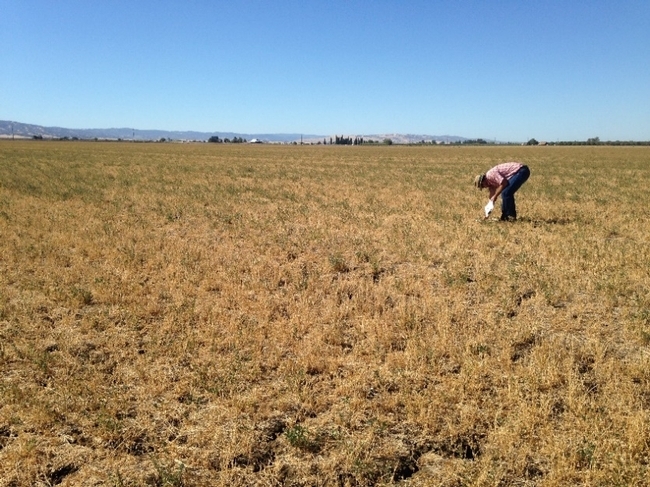
To help farmers make the best use of the water they have available, a series of new and updated drought tips fact sheets has been developed by UC ANR scientists and funded by the California Department of Water Resources.
“These drought tips provide irrigation management recommendations for a broad range of agricultural crops and under different water supply conditions,” said Daniele Zaccaria, UC ANR Cooperative Extension agricultural water management specialist at UC Davis and major organizer of the drought tip series. “The information in these tips will be of practical use for growers and other water-related stakeholders now and into the future as our agricultural community continues to adapt to climate variability and to a changing water supply situation.”
UC ANR scientists have identified best management practices for a wide range of annual and permanent crops and irrigation systems and methods during the drought. In the drought tips series, they also give advice for managing soil salinity and using shallow groundwater for irrigating crops. For beef cattle, they provide recommendations for culling herds and feeding to supplement grazing.
The following drought tips are currently available for free download at http://ucanr.edu/drought-tips:
- Drought strategies for alfalfa
- Drought management for California almonds
- Use of shallow groundwater for crop production
- Drought strategies for walnuts
- Fog contribution to crop water use
- Reclaiming Saline, Sodic and Saline-Sodic Soils

Decades of UC ANR research underlie the information contained in the drought tips. In the 1970s and again in the 1990s, UC ANR partnered with DWR to develop a series of drought management fact sheets.
“DWR has worked with UC ANR to update the drought tips and make sure the latest and best information on water management is available to growers,” said Peter Brostrom, DWR Water Use Efficiency Section Manager.
The California Institute for Water Resources, which coordinates water-related research and extension education across the 10 UC campuses and UCANR, has the drought tips and more drought resources online at http://ciwr.ucanr.edu.
“Even if El Niño brings rain this fall, water scarcity will continue to impact California farmers,” said Doug Parker, director of UC ANR's California Institute for Water Resources. “As climate change continues to reduce the average annual snowpack, it is likely that droughts in California will become more frequent and severe in the years to come.”
UC ANR's California Institute for Water Resources and the California Department of Water Resources also offer drought-related information in a series of videos. Water experts from UC and other agencies and institutions have recorded presentations on high-priority drought topics. Currently 38 videos can be accessed for free on computers and mobile devices at http://ucanr.edu/insights.
UC Agriculture and Natural Resources researchers and educators draw on local expertise to conduct agricultural, environmental, economic, youth development and nutrition research that helps California thrive. Learn more at ucanr.edu
Human behavior patterns influence water conservation
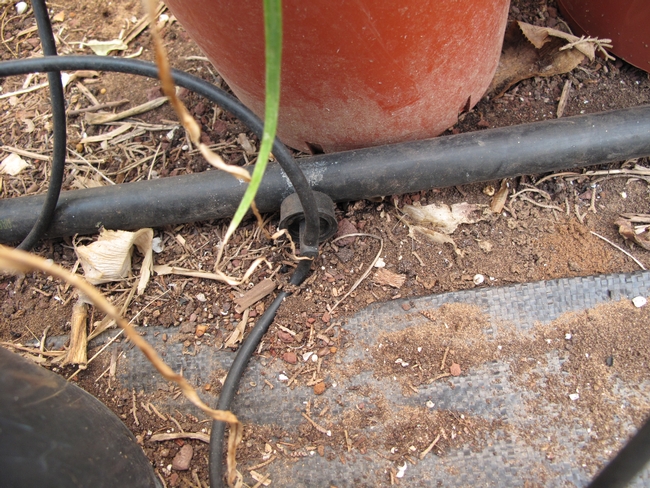
"There is a lot of collective action involved in getting individuals and farmers and water districts to come together to reduce water use," said Lubell, who is also Director of the Center for Environmental Policy and Behavior at UC Davis.
Lubell, whose research focuses on human behavior and the role of governance institutions in solving environmental collective action problems and facilitating cooperation, is particularly interested in watching the conservation efforts prompted by the California drought unfold. "It is definitely a good lab to study cooperation problems or observe them in action," he said.
The difficulty for California is akin to the classic "tragedy of the commons," in which people behave in their own self-interest even when contrary to the best interests of a whole group.
"People are being asked to make an individual sacrifice, but the costs and benefits are experienced by a lot of other people," Lubell said. "People tend to not do the behaviors that make everybody collectively better off."
The solution, Lubell said, is taking a multifaceted approach to encouraging water conservation, including water prices, penalties for not conserving, and influencing social norms. He said social norms are crucial, but they are not established overnight. And the norms can change again when conditions change.
"There will be some behaviors that stick. Some people might put in some irrigation changes where they won't go back and put lawn back in right away," Lubell said. "But short term changes will unstick once it starts raining again. We know the psychology of water use, and people very quickly forget the drier years."

